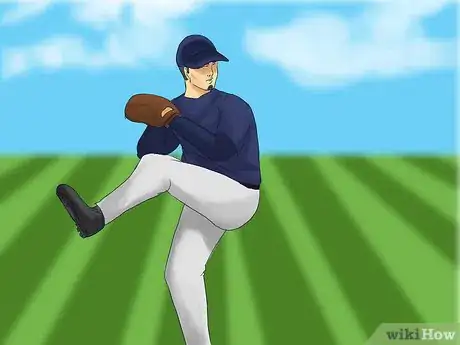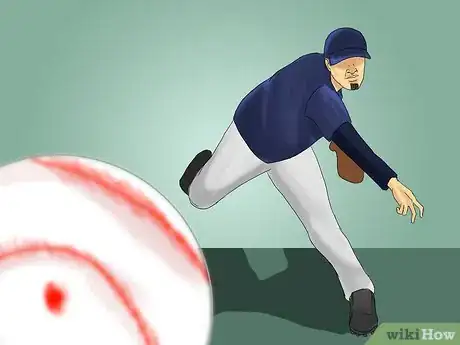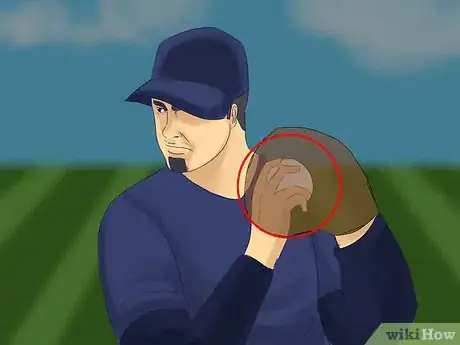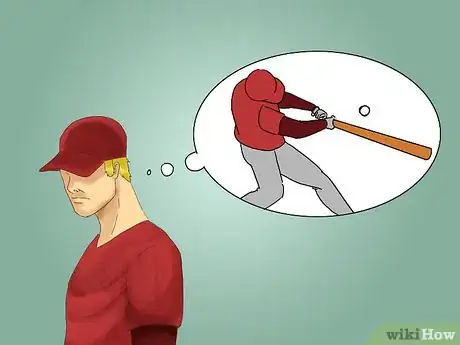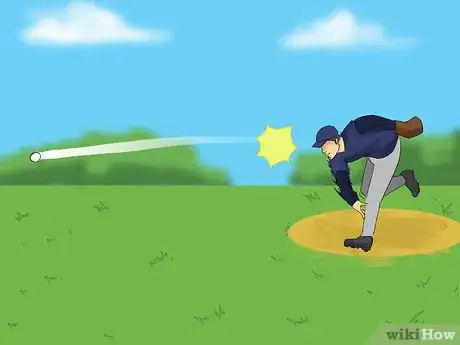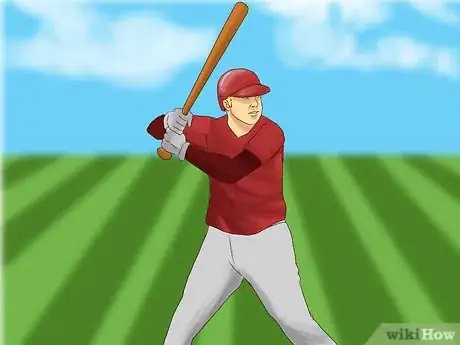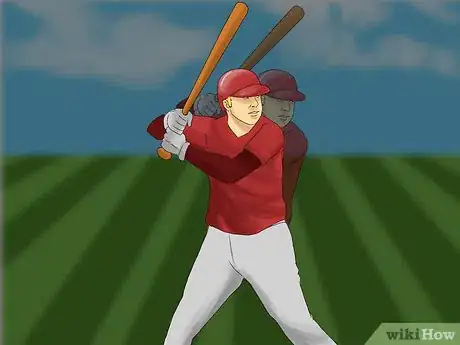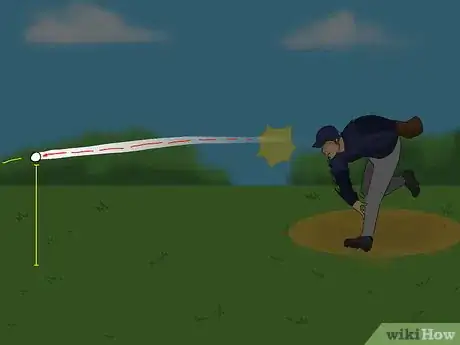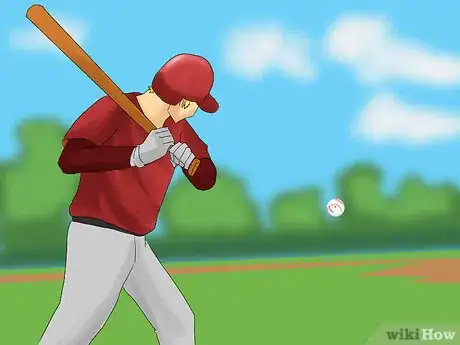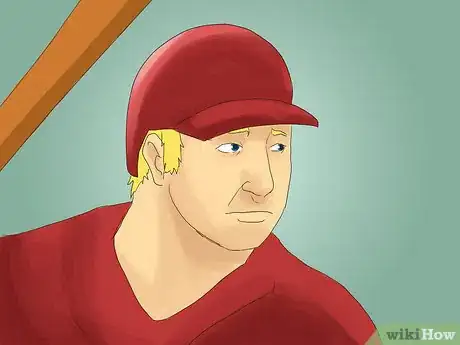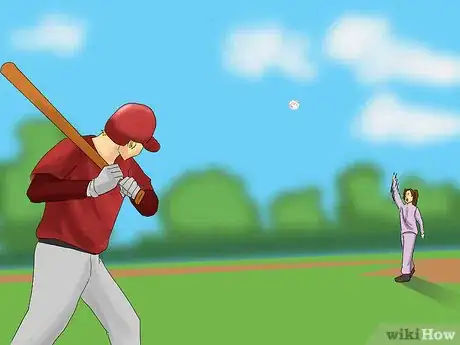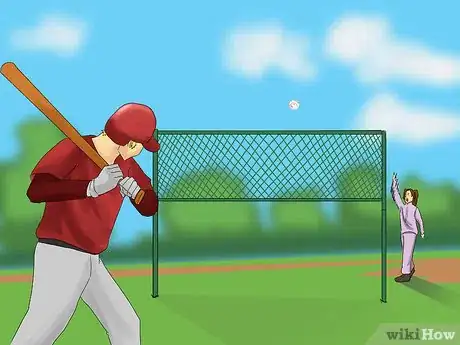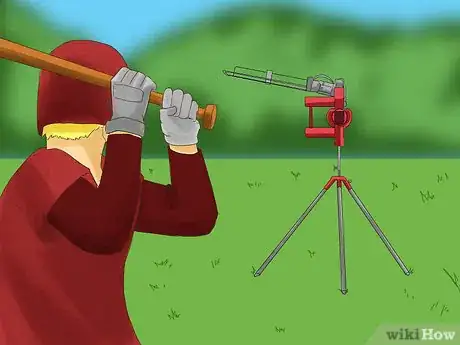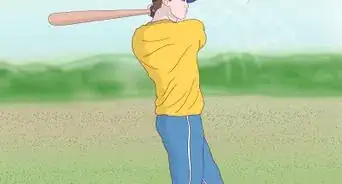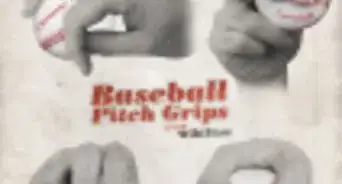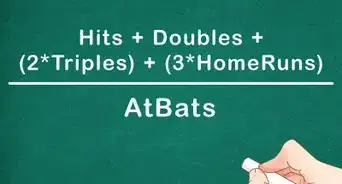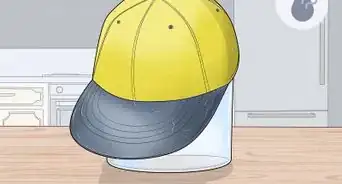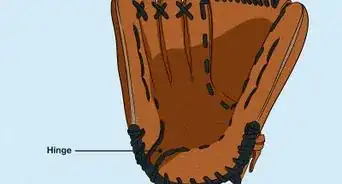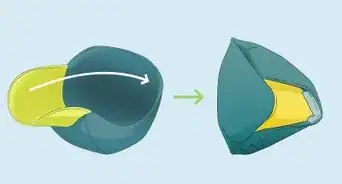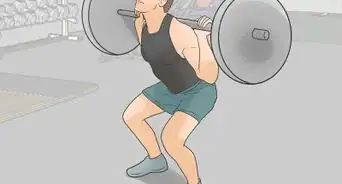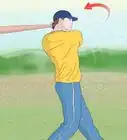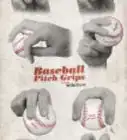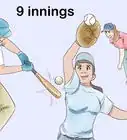This article was co-authored by Isaac Hess. Isaac Hess is a Baseball Coach, Instructor, and the Founder of MADE Baseball Development and Champion Mindset Training Program, a baseball training program based in Los Angeles, California. Isaac has over 14 years of experience coaching baseball and specializes in private lessons and tournaments. He has played baseball for both professional and collegiate leagues including Washington State University and the University of Arizona. Isaac was ranked as one of Baseball America's top 10 prospects for 2007 and 2008. He earned a BS in Regional Development from the University of Arizona in 2007.
There are 10 references cited in this article, which can be found at the bottom of the page.
This article has been viewed 83,935 times.
Even major league players have difficulties hitting the elusive curveball.[1] The purpose of this kind of pitch is to throw off the batsman. It entices batting players into poor swings and deceives them by breaking one direction or another due to spin the pitcher puts on the ball. This is why the curveball is also referred to as a "breaking ball." Even if you think this pitch is one you'll never completely master, there are ways you can beat the physics of the curveball and crush it into outer field.
Steps
Preparing to Crush a Curveball
-
1Study the pitcher while in the bullpen. It's important that you gain a sense for the kind of balls the pitcher is throwing. Note any patterns you recognize, including the pitches he favors and your assessment of his curveball. If most of his curves come across the plate as hanging curveballs, you should be prepared to take advantage of this.
- A hanging curveball is an off speed pitch in your strike zone. With proper preparation, hanging curveballs are ripe for a punishing hit.
- Analyze the pitcher's habits to see if there are any early warning signs for certain pitches, like a twitch of his glove before going into the windup.
-
2Read the pitcher's tells. Some pitchers, especially those with more experience, are better at hiding their tells than others. But a "tell" is where you indicate what is going to happen through body language before you do it. These might include:
- A change in windup.
- A twitch of the glove.
- Searching for the seams of the ball for proper curveball finger placement.
Advertisement -
3Know the types of curveball. The backspin a pitcher puts on a curveball causes pressure to increase in the air in front of and under the ball, causing it to "ride" on this higher pressure air. Curveballs with topspin creates high pressure on top of the ball, deflecting the ball downward.[2] [3] [4]
- If you are able to identify a curveball from the outset, knowing to prepare yourself for a dropping or floating ball will give you the advantage when trying to hit it.
- A downward breaking ball is often referred to as a "12-6 curve" due to the fact that the ball is on a straight appearing path down, like the movement from 12 to 6 on the hands of a clock.
-
4Observe the hand with which the pitcher throws. If the pitcher is a right-hander the ball will break away from righty batters and into lefty batters; the opposite is true for left-handed pitcher. Submarine pitches that attempt a curveball will likely sink into the dirt.
-
5Take into consideration your previous attempts. Batters who are out front, unaware, and/or are imbalanced at the time a curveball is thrown will likely have problems hitting it.[5] Think about times you have tried to hit curves in the past and your stance leading up to the hit. Your stance is not ideal for a breaking ball if:
- You are pushing forward, out front, or are overextending your knee so that its over or in front of your foot.
- You are persistently swinging at balls that are curving outside the strike zone due to over-committal and premature weight transfer.
-
6Evaluate the pitcher on his overall record. If you know you are up against a curveball master, you might have difficulty hitting even his worst breaking ball. But foreknowledge and mentally preparing yourself to face a difficult pitch will keep your focus sharp and your batting average up.
- Watch the path of the pitcher's curveballs and visualize the trajectory of the ball as you would see it from the plate. Think of how you might hit the ball and the ideal place for you to begin your swing.
-
7Factor in his daily performance. If you notice that the other team's pitcher has been having an off day with his curveballs, you may be in luck. Poor daily performance or the high pressure of an important game can negatively impact a pitchers ability to throw a good curve consistently.
- A pitcher having a bad breaking ball day will be more hesitant to make use of the tricky physics of this pitch.
-
8Bat with proper stance. Stance is an important factor for hitting any ball that crosses the plate. Keep your weight on the balls of your feet and your knees slightly bent with your back leg holding more of your weight than your front. Foot placement depends largely on your body type, but some who are knowledgeable in baseball recommend that your feet be set a bit wider than shoulder width.[6] Stand at a right angle to the plate and hold your bat off your shoulder and at the top of your strike zone.
- Keep an eye on your feet; many players have difficulty regulating their stance. To get the best hit, you'll need to make sure your feet aren't too narrowly or widely placed.
- While you wait for the pitcher to begin his pitch, you should be relaxed and keep your feet still as you await the release of the ball.[7]
Crushing a Curveball
-
1Watch the pitchers grip. Seeing that a pitcher is using a curveball from the very release will improve your odds of hitting it greatly. The hand position for a classic curve ball orients the seams in the direction of the pitchers fingers, with the tops of his middle finger touching the inside of a seam of the baseball. This will create a U-shape position in the hand of the pitcher.
-
2Take a hint from the red circle. The spin of a curve ball will have a visual effect on it as it approaches you. If you notice an approximately one inch circle or a solid dot where you would normally see the blur of the red stitching, you have a curve ball incoming.
-
3Reevaluate your stance prior to the pitch. Since the most common kind of curve ball sinks as it approaches the plate, pushing forward and being out front will drastically hurt your odds of hitting it. Not only will keeping your body and weight back, you'll increase power and give yourself some additional slivers of a second to react to and crush the curve.[8]
-
4Recognize the balls trajectory. Most people who have difficulty with curve balls commit too early with their swing and waste a strike on a ball that was outside their zone. Most knee-high balls will break down out of your strike zone and should be avoided. High curves, however, frequently break into the strike zone.[9]
-
5Let the ball come to you. Since a classic 12-6 curve sinks on the approach, rising to meet this ball with your bat is not advised.[10] If the angle of your swing is not spot on, you'll miss the ball or get poor contact.
- Many experts argue that this is the most critical part of hitting a breaking ball. If you know the kind of break the pitcher will be using, allow the ball to sink into your swing.[11]
-
6Make use of your hesitation. A little hesitation can be a good thing when the pitcher is throwing an off-speed pitch. You may feel a kind of tension or hesitation once your stride foot comes down. During this critical moment, you should keep your hands and the majority of your weight (about 70%) back, so that in the event the ball is a hittable curve, you are prepared.[12]
Drilling Your Curveball Technique
-
1Utilize variable speed pitches when practicing batting. Have a practice partner stand behind a screen about 15 ft in front of the plate. Your practice partner should alternate between overhand and underhand techniques, giving an irregular tempo to the pitches coming across the plate. Your goal is to drive all of these right up middle field.[13]
- The variability of these pitches will help you recognize off-speed pitches and the shifts in posture and body position that accompany off-speed pitches.
-
2Stay inside of breaking balls. Your practice partner should stand on your open side at about 45° behind your batting position. Have your partner lob an underhand toss into the contact zone while you concentrate on crushing the ball straight into the midfield.[14]
- The angle of approach for this drill is ideal for giving you the impression that you are on the inside, which is the right habit to have when trying to hit a breaking ball.
-
3Train patience with lobs. It can be difficult allowing curves to drop and come to you. To practice patience and keep yourself from pushing forward and being out front, have a practice partner set up a screen 10 - 15 ft in front of you. Then have him lob the ball to you over the screen.[15]
- Wait for the ball to enter your optimal hitting zone.
- Stay inside the ball.
- Attempt to rocket the ball straight up the middle.
-
4Reinforce recognition of curveballs. The more you practice the curveball, the easier it will be for you to notice and manage. You might consider spending one-on-one time with your pitcher to train hitting his curves or even drilling the curveballs from a pitching machine.[16] [17]EXPERT TIPIsaac Hess is a Baseball Coach, Instructor, and the Founder of MADE Baseball Development and Champion Mindset Training Program, a baseball training program based in Los Angeles, California. Isaac has over 14 years of experience coaching baseball and specializes in private lessons and tournaments. He has played baseball for both professional and collegiate leagues including Washington State University and the University of Arizona. Isaac was ranked as one of Baseball America's top 10 prospects for 2007 and 2008. He earned a BS in Regional Development from the University of Arizona in 2007.Baseball Coach & Instructor

 Isaac Hess
Isaac Hess
Baseball Coach & InstructorExpert Trick: If you can't work with a pitcher or a curveball machine, try playing a baseball game like MLB The Show. That way, you can get familiar with picking up the spin out of the pitcher's hand.
Expert Q&A
Did you know you can get expert answers for this article?
Unlock expert answers by supporting wikiHow
-
QuestionHow do you spot a curveball?
 Isaac HessIsaac Hess is a Baseball Coach, Instructor, and the Founder of MADE Baseball Development and Champion Mindset Training Program, a baseball training program based in Los Angeles, California. Isaac has over 14 years of experience coaching baseball and specializes in private lessons and tournaments. He has played baseball for both professional and collegiate leagues including Washington State University and the University of Arizona. Isaac was ranked as one of Baseball America's top 10 prospects for 2007 and 2008. He earned a BS in Regional Development from the University of Arizona in 2007.
Isaac HessIsaac Hess is a Baseball Coach, Instructor, and the Founder of MADE Baseball Development and Champion Mindset Training Program, a baseball training program based in Los Angeles, California. Isaac has over 14 years of experience coaching baseball and specializes in private lessons and tournaments. He has played baseball for both professional and collegiate leagues including Washington State University and the University of Arizona. Isaac was ranked as one of Baseball America's top 10 prospects for 2007 and 2008. He earned a BS in Regional Development from the University of Arizona in 2007.
Baseball Coach & Instructor
-
QuestionIf the field ump calls player out, what happens if player on the runners team says he was safe?
 DonaganTop AnswererThe only opinion that matters is the umpire's.
DonaganTop AnswererThe only opinion that matters is the umpire's.
Warnings
- If the pitcher is submarine or side-arm, don't swing. Chances are it'll land in the dirt or outside.⧼thumbs_response⧽
References
- ↑ http://www.nytimes.com/2008/05/09/opinion/09glanville.html?_r=0
- ↑ http://lokeshdhakar.com/baseball-pitches-illustrated/
- ↑ http://www.phschool.com/science/science_news/articles/pitching_science.html
- ↑ https://www.exploratorium.edu/baseball/curve.html
- ↑ http://www.hittingworld.com/Conquering_the_Curveball_p/art5.htm
- ↑ http://www.qcbaseball.com/hitting/hitting-batting-stance.aspx
- ↑ http://www.qcbaseball.com/hitting/hitting-batting-stance.aspx
- ↑ http://www.hittingworld.com/Conquering_the_Curveball_p/art5.htm
- ↑ http://www.hittingworld.com/Conquering_the_Curveball_p/art5.htm
- ↑ http://ffden-2.phys.uaf.edu/211_fall2002.web.dir/jon_drobnis/Curveball.html
- ↑ http://www.hittingworld.com/Conquering_the_Curveball_p/art5.htm
- ↑ http://www.hittingworld.com/Conquering_the_Curveball_p/art5.htm
- ↑ http://www.baseball-tutorials.com/baseballhittingdrills/
- ↑ http://www.hittingworld.com/Conquering_the_Curveball_p/art5.htm
- ↑ http://www.hittingworld.com/Conquering_the_Curveball_p/art5.htm
- ↑ http://www.nytimes.com/2008/05/09/opinion/09glanville.html
- ↑ http://www.nytimes.com/2009/02/21/sports/baseball/21mets.html
About This Article
To hit a curveball, start by standing with your body at a right angle to the plate and your feet a little wider than shoulder-width apart. Next, as the pitcher prepares to throw, note if his fingers are parallel to the seams on the ball, which is the classic method for holding a curveball. As the ball comes toward you, see if you notice a solid red dot in the middle of the ball that suggests the pitcher threw a curve. Then, keep your body back instead of lunging forward and wait as long as possible before swinging at the ball. For advice on how to run drills to improve your curveball technique, read on!

